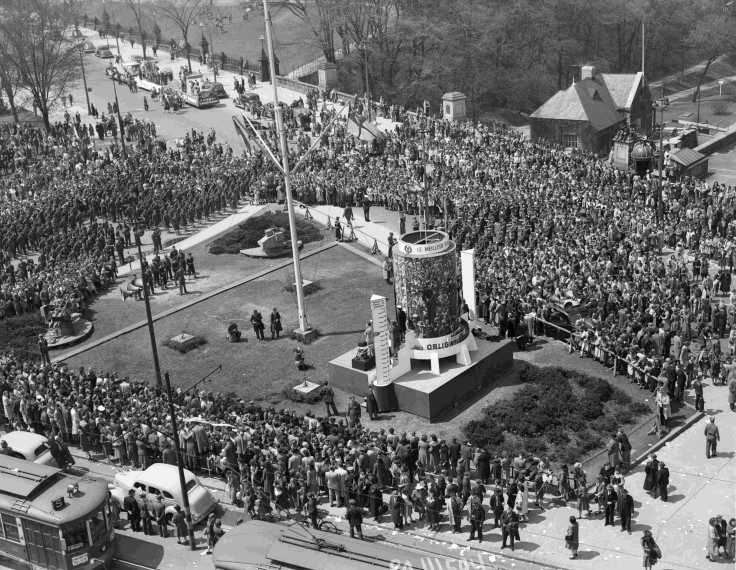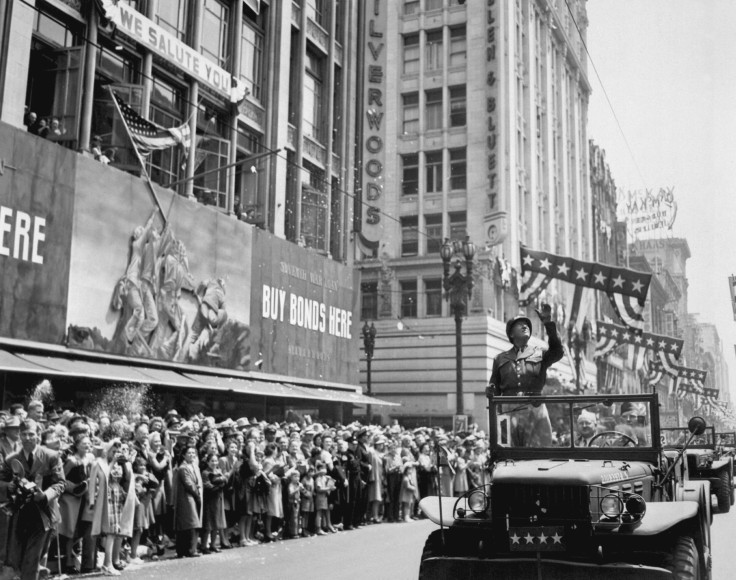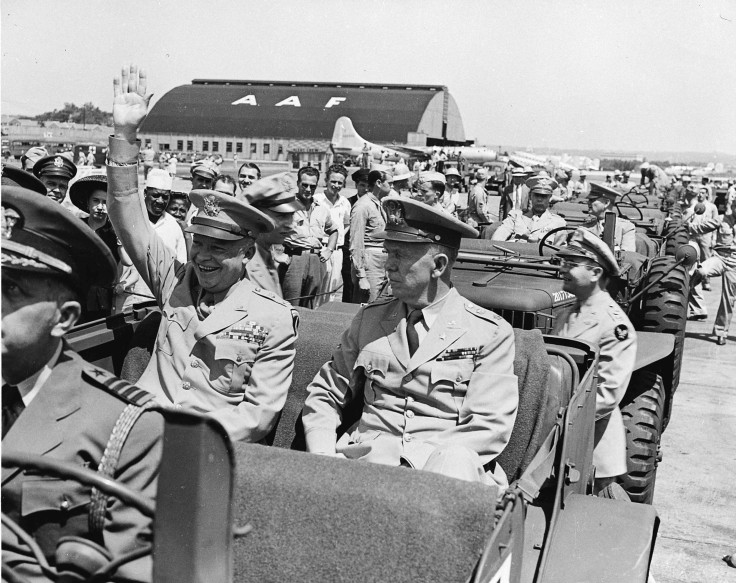V-E Day 70th Anniversary: World War II Facts To Mark Allies' Victory In Europe [PHOTOS]

Friday marks the 70th anniversary of V-E Day, the formal end of World War II in Europe. On May 8, 1945, Adolf Hitler's successor, Adm. Karl Dönitz, surrendered to the Allies. The announcement inspired thousands of people to take to the streets in Europe and the United States in celebration.
"The war was not yet won; it would be three more months of fighting in the Pacific," U.S. President Barack Obama said in a statement Friday. "But V-E Day represented, at long last, a hope for peace."



Since then, people across the world have observed Victory in Europe Day -- or V-E Day -- on May 8 each year. Russia, however, following the Soviet Union's practice, observes its Victory Day on May 9. The United Kingdom was due to hold two minutes of silence Friday before lighting beacons at sunset, BBC News reported. Washington, D.C., was scheduled to have a ceremony for veterans and a flyover Friday afternoon, USA Today reported.
Want to learn more about the circumstances around V-E Day? Read on for facts about World War II, collected from CNN, Random Facts and the Armed Forces Museum:
- World War II started on Sept. 1, 1939, when German forces under Nazi leader Adolf Hitler invaded Poland. Britain demanded that Germany withdraw, but Hitler refused, and the United Kingdom declared war on Sept. 3, along with France.
- When the UK declared war, Prime Minister Neville Chamberlain said he would fight injustice and oppression caused by Hitler, adding, "His action shows convincingly that there is no chance of expecting that this man will ever give up his practice of using force to gain his will. He can only be stopped by force." Here is his full speech.
- World War II was the most destructive war in history.
- About 15 million soldiers and 45 million civilians died during the conflict.
- The Soviet Union lost the most people to the war, with an estimated 24 million dead.
- The Axis Powers included Germany, Italy and Japan. The Allied Powers included countries like the Soviet Union, the U.S., China, Australia, Brazil, Canada, South Africa, Greece and the Netherlands.
- The Allies dropped 3.4 million tons of bombs during the war.
- Hitler's nephew, William, fled Nazi Germany and ended up in the U.S., where he joined the Navy. After the war, he changed his last name and lived in New York.
- The war officially ended on Sept. 2, 1945, V-J Day, when Japan signed surrender documents to the U.S. on the battleship USS Missouri in Tokyo Bay.
- President Harry S Truman dedicated the victory to his predecessor Franklin D. Roosevelt, who died April 12, 1945, weeks before the war ended in Europe.



© Copyright IBTimes 2024. All rights reserved.












